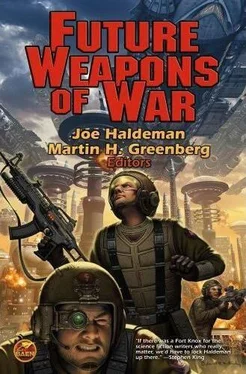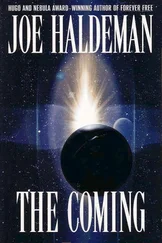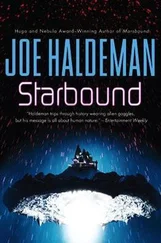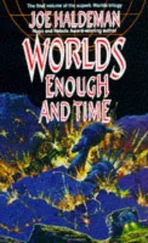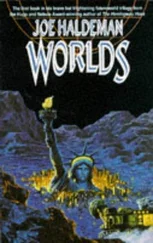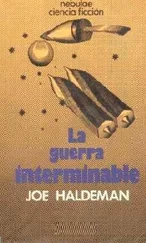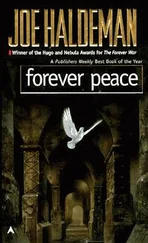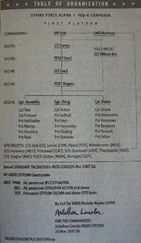Well over half of all sentient life within the Galaxy was not even corporeal. It existed within networks of interconnected computers—some widely distributed, most distributed through individual systems. Such beings possessed their own realities, and were barely aware of the material world beyond their ken. From their viewpoint, of course, theirs was the reality, where the Cosmos was the shadow.
Of corporeal life, nearly twenty percent was still organic or mostly so. Ephemeral by nature, they looked upon the Cosmos very differently from their long-lived machine partners. Some were long-lived themselves, and many recycled memory, ego, and mind through countless bodies to achieve a kind of immorality, but to beings reliant upon chemical metabolism, even a million years—the blink of a cosmic eye—was a very, very long time.
And for the countless immortals, how many different ways, what far-flung diversity of philosophies is necessary to endure the passing eons? Andromeda filled the night skies of billions of worlds now, spectacular, terrible, and beautiful. Among the individual civilizations that com prised Galactic sentience, millions were kallonophiles—devoted to the cultivation and appreciation of beauty.
Mil lions more were armoniaphiles, devoted to the concept of harmony—a harmony that would be sundered by the Weapon. Tens of millions pursued ideals of passivity, peace, and noninterference; like the long vanished Passive Enlightenment, they were devoted to What Is, not to what might be wrested from an uncooperative nature.
A sizeable contingent was comprised of nihilists. For them, ultimately, there was no purpose to the universe, or to maintaining the viability of the Metaculture. After all, within a few trillion more years, the last flicker of energy would fade into randomness, and the cosmos itself would suffer the inevitable heat death of a universe doomed from the first instant of its birth.
And an even larger contingent was simply tired… exhausted by the war, exhausted by the long and ultimately futile striving of Life.
When the Star Lords sought to muster the Collective Will of the Galaxy, they’d succeeded in raising barely twenty-eight percent of what was necessary to trigger the Weapon.
The Star Lords now faced the ultimate paradox. They could muster the requisite will to destroy Andromeda only if they adopted the modality of their extinct Enemy—marshaling Mind as they marshaled data. A totalitarian regime might muster the necessary energies. A cooperative association could not.
One Star Lord, occupying a Dyson cloud in one of the Galaxy’s spiral arms, asked the necessary question.
“Do we become what we once fought against in order to survive?”
The Overmind of the Star Lords considered the question for a very long lime… so long that the last possible moment of decision was very nearly upon them. Another few half-lives of plutonium-239, and no amount of energy could safely divert the looming spiral of Andromeda. Already separated by only a couple of hundred thousand light-years, both spirals showed severe distortion, as gravitational tides began to tear them apart. The nearest spiral arms were reaching for one another, as though welcoming that final, deadly embrace.
Consensus was reached at last.
Many Star Lords fled, dissolving their individual partnerships, or escaped entirely, using gravitational anomalies to accelerate themselves into a distant future.
Those who remained would wait, watch… and let the cosmic drama play itself out without their interference.
* * * *
Ygal34.2
The linked Overmind watched the plays final act. Three billion years after Selan and Valova had argued the point, Andromeda’s core punched through the Home Galaxy’s disk like a bullet through tissue, flinging stars by the billion into space. The remaining Star Lords did what they could, using the Weapon to divert some stars, some infalling clouds of dust and gas, to ameliorate the worst of the damage… continued to do so until gravitational tides disrupted the delicate balance between the individual components of the Weapon.
By Ygal34.32, the Weapon was no more.
The Andromedan core and the Home Galaxy core separated, slowed, then fell together once more. A billion years after the first impact, and nine tenths of the Home Galaxy had dissolved into hurtling, individual stars. Andromeda’s double core melded with the smaller remnant of the Home Galaxy’s core: three knots of stars and merging black holes, loosing an intense burst of hard, ionizing radiation.
By that time, however, the Overmind consciousness, its internal communicative network savaged beyond all repair, was fading into oblivion.
* * * *
40.33
Once, eons past, the star had been called Sol. Now over nine billion years old, it had already begun expanding into its red giant phase.
No planets remained. All had been disassembled long ago—even the original birthworld of
genus Homo —in order to manufacture more and ever more of the spomes and worldlets that comprised the system’s Dyson cloud, worldlets now numbering in the tens of trillions.
Upon the surface of the ancient world once known as Earth, civilizations had long since come, flourished, and gone—some of them brilliantly. Vast cities had covered whole continents, and eventually vanished. Mountains had thundered as they reached for the sky, and eventually and silently been worn into sand by the passing eons. Glaciers had come, gone, and come again, the age-old cycle ended at last by only by deliberate adjustments to the planets orbit. The oceans, eventually, had dried.
Earth had lived and passed as had most other worlds throughout the Home Galaxy, eventually providing the raw materials for ten billion new worldlets.
All that Earth had been, however, remained—as galaxies of data stored within the myriad artificial minds on the Dyson cloud.
Now, as Sol grew larger, the Dyson cloud itself was rearranged. Its component orbits changed, moving them further out. Eventually, as Sol collapsed, it would be necessary to follow the warmth inward once more. When Sol was a tiny white dwarf, only a fraction of the habitats would be able to draw upon his dwindled heat. The rest would rely on Zero Point energy—arguably the one inexhaustible resource in a Cosmos grown dark and cold. Cosmologists remained divided over whether vacuum fluctuations might survive the heat death of the universe.
That day remained many galactic years in the future, however. For the moment, the Sol Cloud survived.
The Mind hovered within an individual spome and considered the vast-spread panorama within the hurtling star’s wake. Sol had been flung clear of the Home Galaxy by the interpenetration of the galaxies, and now, two billion years later, continued to travel into the Night, eight hundred thousand light-years from the hazy glow of the merged galactic nuclei. The sky was starkly empty; other galaxies shone, dimly, as pale patches of light in the remote distance. The nearest star of this epoch—a sullen ember of a red giant, worldless and sterile—hung in an empty Void almost six hundred light years away.
Worse by far, they no longer had the resources to maintain the nonlocal communicative Net.
Once again, the remote descendents of ancient humanity were limited by c not only in travel but in communications. The nearest communicative civilization circled the fourth-nearest star… over twelve hundred light years away.
For the first time in three billion years, Earths children were truly alone.
Mind contemplated the Ultimate Night.
“We are not defeated,” it said at last.
“We are changed,” another said. “Change is not defeat.”
Читать дальше
